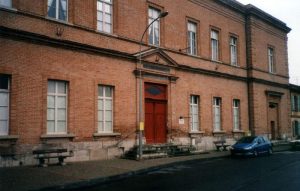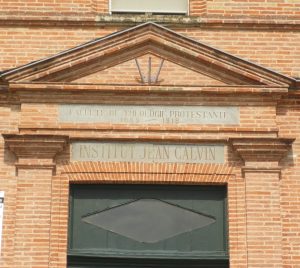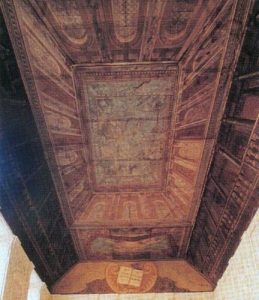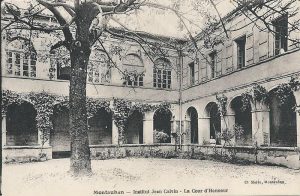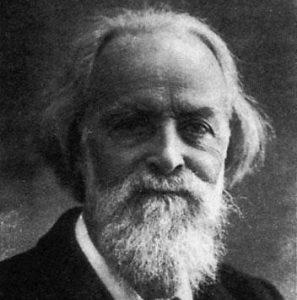- The fortifications and convent
Walking around the Scorbiac Private Mansion, we arrive at the Montmurat Quay. The view over the ravine of Lagarrigue stream, called the Mandoune, shows how easy it was to fortify the site of Montauban. In the Middle Ages the stream was crossed further down by a bridge accessible via steep paths. At the corner formed by the banks of the Tarn and the ravine, was an important part of the medieval walled enclosure, with a city gate (the gate Montmurat). On the quay one can see three convents built between 1630 and 1640 at the time of Catholic repopulation of Montauban.
- The Temple of the Faculty (former convent of the Poor Clares)
The Clarisses or ‘Poor Ladies’ are the female branch of the Franciscans who belong to an order of austere rule, founded in 1213 by St Clare, contemporary and disciple of St Francis of Assisi. In 1528 the lord of Puycelci offered a large piece of land near Montauban to establish a convent. As it was outside the city walls, looters attacked it during the Hundred Year War. In 1368, the nuns took refuge inside the city walls on the site of the present Cathedral Square. They were expelled by the Calvinists in 1561, and settled down in Montech. In 1629, after Montauban was submitted they went back to the land they had abandoned three centuries before, they decided to occupy the land they had abandoned three centuries earlier. They returned in 1631 and the foundation stone of the new convent was laid in 1640 The sisters remained there until 1792 when the convent was confiscated, bought back and turned into a prison. In the attic are traces of messages written by prisoners of the Revolution era, and also by Huguenot girls taken away from their families after the Revocation of the Edict of Nantes in 1685, who were locked up with the Claarisses and given a Catholic education, but also by the prisoners of the revolutionary period.
Napoleon I, by decree of 5 June 1810, decided to establish, in the former convent, a faculty of Protestant theology and the former chapel was assigned to worship. Apart from the Chapel the rest of the former convent buildings, extended in the 19th century, are now a Protestant retirement home. There is a beautiful 18th century decor with a trompe l’oeil ceiling. The Faculty of Theology was transferred to Montpellier in 1919. In 1920 the Institute Jean Calvin, a boarding school for boys, occupied the convent premises until 1960. Many students, a lot of foreigners among them, attended the Faculty of Theology until it was moved to Montpellier. This is how the Scots imported rugby to Montauban, one of the first cities in France to practice this sport. Some well-known people studied there, such as Elisée Reclus, a determined opponent to Napoleon III.

